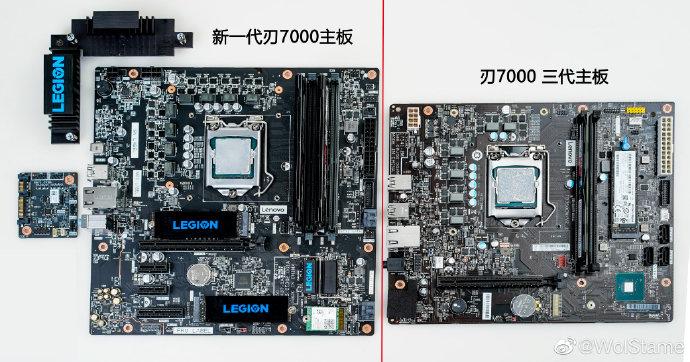Legion motherboards exclusively made for its pre-built gaming PCs.
Lenovo is branding its motherboards in its Legion gaming desktop machines. Unlike boutique systems which use retail components, most pre-built gaming PCs lacks in aesthetics as a cost-cutting measure. Mass-built gaming PCs from companies like Dell/Alienware, HP/Omen and Lenovo/Legion use pompous case designs try to appeal towards gamers. But tear downs makes a bad impression enough to justify the lack of side panels.
Challenges adopting a pre-built Gaming PC
Aesthetics aside, internal components of a prebuilt PCs are stripped-down components with several cost-cutting measures. More cost-cutting measures are obvious in closer look- very limited rear and front panel I/O, PCIe & DIMM slots, fewer SATA ports. Veteran system builders and gamers suspect some of these components are made to fail after a certain point in time. Many criticize lack of better VRMs, chokes, capacitors- opposite to what you’ll see in DIY motherboard brands. The fear of being a victim of planned obsolescence and inability to replace non-functioning components keeps most people away from pre-built PCs. The included graphics card which uses plastic shroud blowers (just like Asus Turbo series) with lower than Founders Edition clock speed.
Maybe Lenovo is trying to turn a new leaf slowly?
Maybe some of these nuisances would be addressed. While it usually recommended going the DIY way for gaming desktops, some prefer to have its system built by boutique system builders like Origin PCs that use DIY components. While others prefer to pick one of these mass-produced units.
Lenovo started with aesthetics- with the Legion branded aluminium heatsink bolted on the black PCB motherboard with spring-loaded screws. They’re still non-standard ATX designs. It said to use Intel 300 and 400 series chipsets.
It does have 4 DIMM slots in one and 2 DIMM slots in the other variant. You can see 8+ 2 phase design. The first one has two M.2 for dual storage with a heatspreader and another for the M.2 BT+WiFi card.
Based on these photos, Lenovo still provides limited rear I/O options. Contrary to claims made by some sources, Lenovo stepping in with the DIY market with these is not possible. The non-standard ATX design is a dead giveaway.
Still, Lenovo will have to compete with many within its niche. Asus/ROG, Gigabyte/AORUS sell components and pre-built systems.



